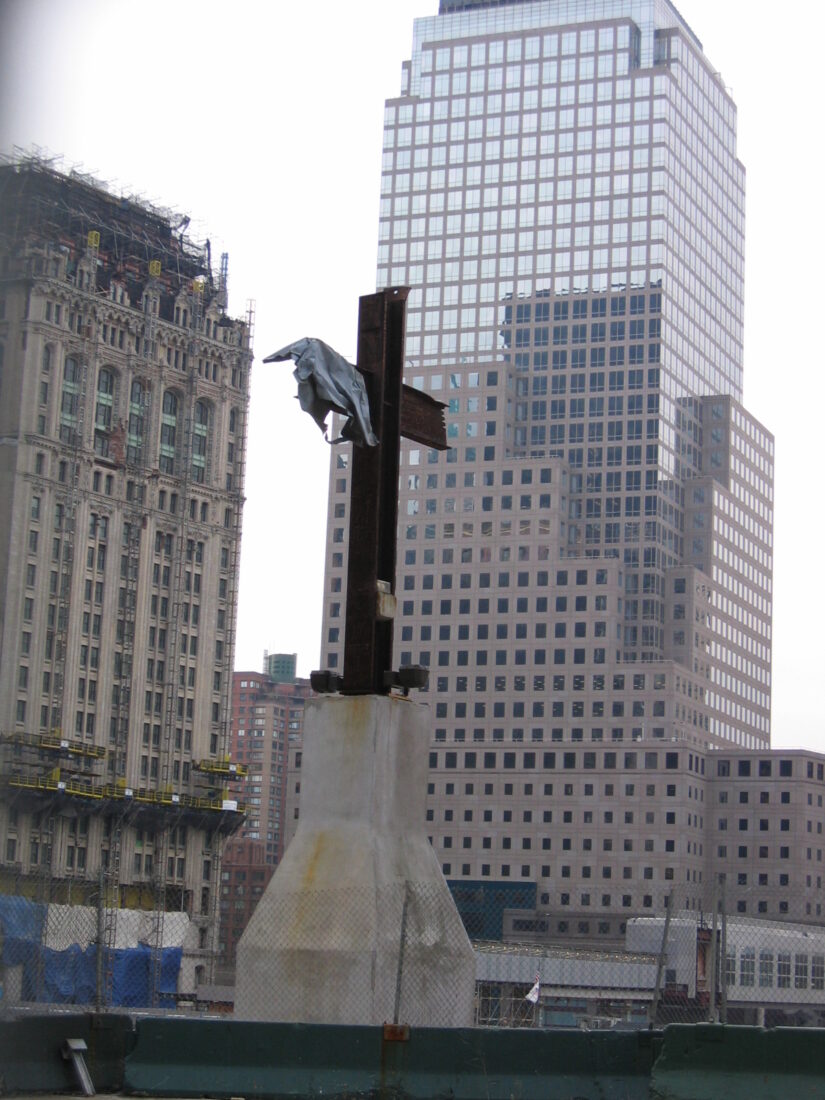The shape of the cross is found in wreckage and ruin, in galaxies, and in the human body
Written by Emily LaRose
Flattened out, the protein called laminin’s t-shape structure forms the shape of a cross. Found in the bodies of humans and animals, laminin forms sheets and binds to cells, supporting and attaching cells within organs.
This minuscule cross-shaped protein is the glue that gives support to organs and in turn the whole body, holding it together. The flutter of a heartbeat, the faint sigh of the lungs, both possible because of laminin. Whether one reveres the cross or not, there is a cross-shaped protein within every body.
The cross makes its appearance in our world in many other ways too—subtly or with great majesty pointing to Christ and the greatest act of love.
In the third quadrant of the Southern Hemisphere, a cluster of stars gleam. In a galaxy of spinning, flickering, orbs of chemical and stone, these stars can be seen from Earth at just the right angle. It’s the smallest constellation our puny planet is honoured to see. The Crux Constellation, also known as the Southern Cross.
The five main stars of the constellation glitter in the shape of a cross: Acrux, Mimosa, Gacrux, Imai, and Ginan. The brightest of these is Acrux. Luminous from over three hundred lightyears away, it shines twenty-five-thousand times brighter than our sun.
The Southern Cross constellation makes its appearance on the flags of Australia, Brazil, New Zealand, Papua New Guinea, and Samoa. This tiny cross shape is one of the most distinctive constellations burning in the Southern Hemisphere.
In Paris, beneath a sky full of silent stars, fire feverishly devours the beloved Notre Dame Cathedral. Flames ravage the historic church for hours. The air fills with mournful groans from burning timber and gathering onlookers as the famous gothic spire collapses. Black and grey smoke spews from the building.
Since the 1200s, the cathedral has blessed the city of Paris with its beauty. It gave name and narrative to Victor Hugo’s literary masterpiece. The twenty-three-tonne bell Emmanuel in the south tower was heard for over three hundred years. Joy and sorrow. Tranquility and terror. Singing and weeping and praying.
And then it’s over. The blaze stills. The sky clears. Inside, blackened walls and burnt wreckage mark the once brilliant church. Crumpled and burnt scraps lie before the altar. But something glows among the rubble. A cross. It stands unscathed, emitting a golden glow in the heart of Notre Dame.
In New York, jagged pieces of wire and cement, glass and metal form skeletal remains that pierce the sky. Not one tower, but two. Brick and iron and people crumbled to the ground, creating a mass grave in just short of an hour. The city skyline changed forever.
Two days after the attacks, excavators and recovery workers still trek the wreckage. Excavator Frank Silecchia spots it first.
Thrust upright among the remnants of The World Trade Center, a sign. A symbol of hope. Faith in the face of unimaginable tragedy.

Here, at Ground Zero, a seventeen-foot-long steel crossbeam weighing at least two tonnes rises vertically from the rubble. Now standing in the 9/11 Memorial and Museum in New York, this cross beam, once supporting a structure, now supports the hope of the grieving.
In Jerusalem, a man is arrested. Although innocent, His plea is guilty. Sentence: death. Leather chords swing, snap, and meet bare flesh. Embedded in the fibres of these chords are bits of metal and sheep bone, ripping open his back. Blood drips, bone is exposed.
He’s dragged away, too weak to walk. Spit flies from soldiers’ mouths and lands on his face. Fingers reach and rip away his beard. A soldier takes a branch covered in gangly thorns and bends it into a crown.
Crowds watch as He is led away, so mangled He no longer looks human. They force the innocent man to carry the crossbeam, the wood rubbing across His shredded back with every step. The instrument He will die upon.
When they reach the place they call the skull, nails are driven into His hands and feet, fastening Him to the beam. They lift him up. The beam thuds into place. The way his body hangs only by his wrists, he cannot properly exhale. Pushing up on the nails driven into his feet he lets out an excruciating breath.
Push, exhale, push. For six hours he hangs there on the cross. Soldiers watch, mocking. He breathes His last breath. “It is finished.”
But this isn’t where it ends. If it ended here, the cross would not be a symbol of hope, faith, and light in these moments of terror, destruction, and death. While the cross brought grieving and death, it brought everlasting hope too.
Jesus was laid in a tomb. On the third day, that tomb was empty, the stone was rolled away, and death was defeated. On the first day of the week, words of hope changed history: “He has risen; He is not here.”
The cross is housed not just in our bodies and in the galaxies, it’s also buried in the wreckage and ruin of human evil and disaster. It’s a symbol of terror turned to hope. It’s a reminder that our God renews, redeems, and resurrects.










